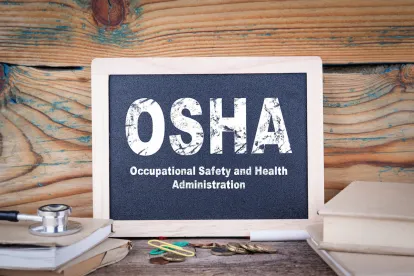Pointing to climate change and the number of workplace deaths, injuries and illnesses tied to excessive temperatures, the Biden Administration today announced more regulatory and enforcement efforts aimed at workplace heat hazards. OSHA previously signaled that the new rulemaking efforts were coming by including the heat issue on its Spring Regulatory Agenda. Further, speeches this summer from the acting head of OSHA, Jim Frederick, left little doubt that heat concerns are the Administration’s single greatest current occupational safety focus - aside from COVID-19.
These workplace safety efforts are part of a broader interagency initiative announced by the White House today that is premised on extreme heat’s increasing threat to “the lives and livelihood of Americans, especially workers, children and seniors.” While this new effort is multifaceted and addresses public safety in addition to occupational safety, employers in particular will need to pay increased attention to regulatory and enforcement efforts that will be coming from OSHA based on instructions from the White House.
Specifically, the Biden Administration announced that “[t]he Department of Labor is launching a multi-prong initiative on occupational heat exposure to protect outdoor workers, including agriculture, construction and delivery workers, as well as indoor workers, including those in warehouses, factories and kitchens.”
Specifically, the OSHA efforts announced today include the following:
-
OSHA is issuing “advance notice of proposed rule-making (ANPRM) on heat illness prevention in outdoor and indoor work settings.” This rulemaking notice will initiate a comment period that will allow OSHA to consider “diverse perspectives and technical expertise” on appropriate “heat stress thresholds, heat acclimatization planning, and exposure monitoring.” The ANPRM is to be published next month.
-
In addition to beginning this regulatory process, OSHA is undertaking a new enforcement initiative that, in the absence of current heat hazard regulations, must be based on General Duty Clause of the Occupational Safety and Health Act of 1970. Under this new enforcement initiative, OSHA will focus greater effort on workplace inspections and “interventions” for days in which the heat index exceeds 80°.
-
The White House also announced that OSHA is working to complete a National Emphasis Program (NEP) on heat hazard cases.
-
Finally, OSHA is forming a “Heath Illness Prevention Work Group” within OSHA’s National Advisory Committee and Occupational Safety and Health (NACOSH) to provide “better understanding of challenges and best practices in protecting workers from heat hazards.”
These federal efforts come after a number of states including California, Oregon, Washington and Minnesota have adopted either regular or emergency heat stress standards for workplaces.
A significant impediment for enforcement efforts in the near term may be the Occupational Safety and Health Review Commission, which hears contested OSHA citations. A number of decisions issued by the Commission itself and a Commission administrative law judge, in the last three years, have made it much more difficult for OSHA to effectively utilize the General Duty Clause as a means of enforcing heat safety. It is apparent that the Administration will make efforts to overcome the enforcement challenges created by those decisions and will deal with the impediment in the long-term by ultimately adopting heat-specific standards rather than relying on the General Duty Clause.
The key to-do items for employers given these developments include:
-
Review your existing programs intended to protect employees working either in indoor environments without air conditioning or any outdoor locations, from heat hazards.
-
Be careful to comply with any existing state law heat standards applicable to any of your workplaces, such as in California, Oregon, Washington and Minnesota.
-
Consider utilizing the state heat hazard standards, such as the California or Oregon standards, as a benchmark for how strong your heat hazard protection programs are generally.
-
Carefully follow upcoming developments from OSHA, both in the rulemaking and enforcement arenas, in assessing the adequacy of your heat hazard programs.
For additional information, our recent 60 minute webinar, which devoted significant time to heat illness topics, is available here.




 />i
/>i

